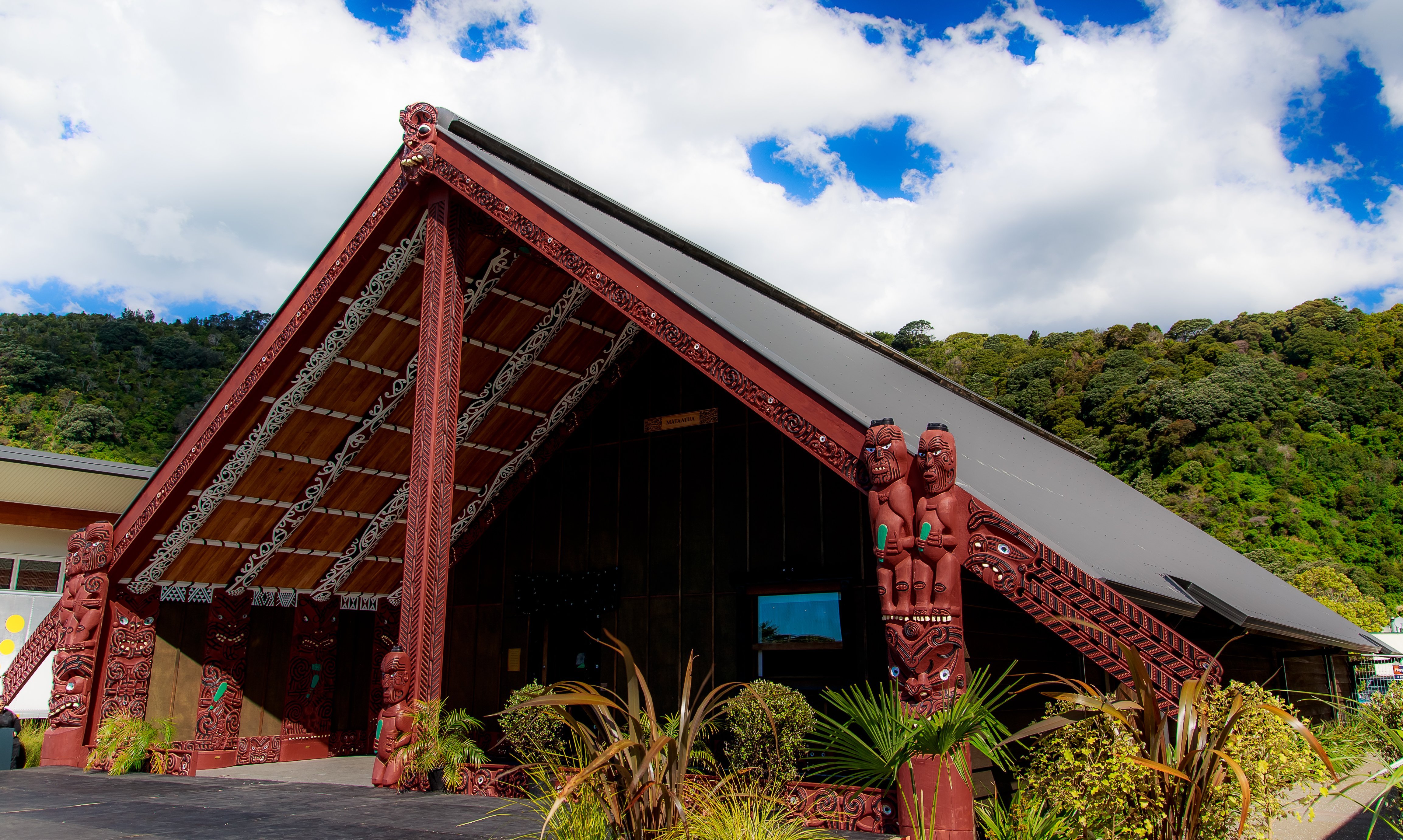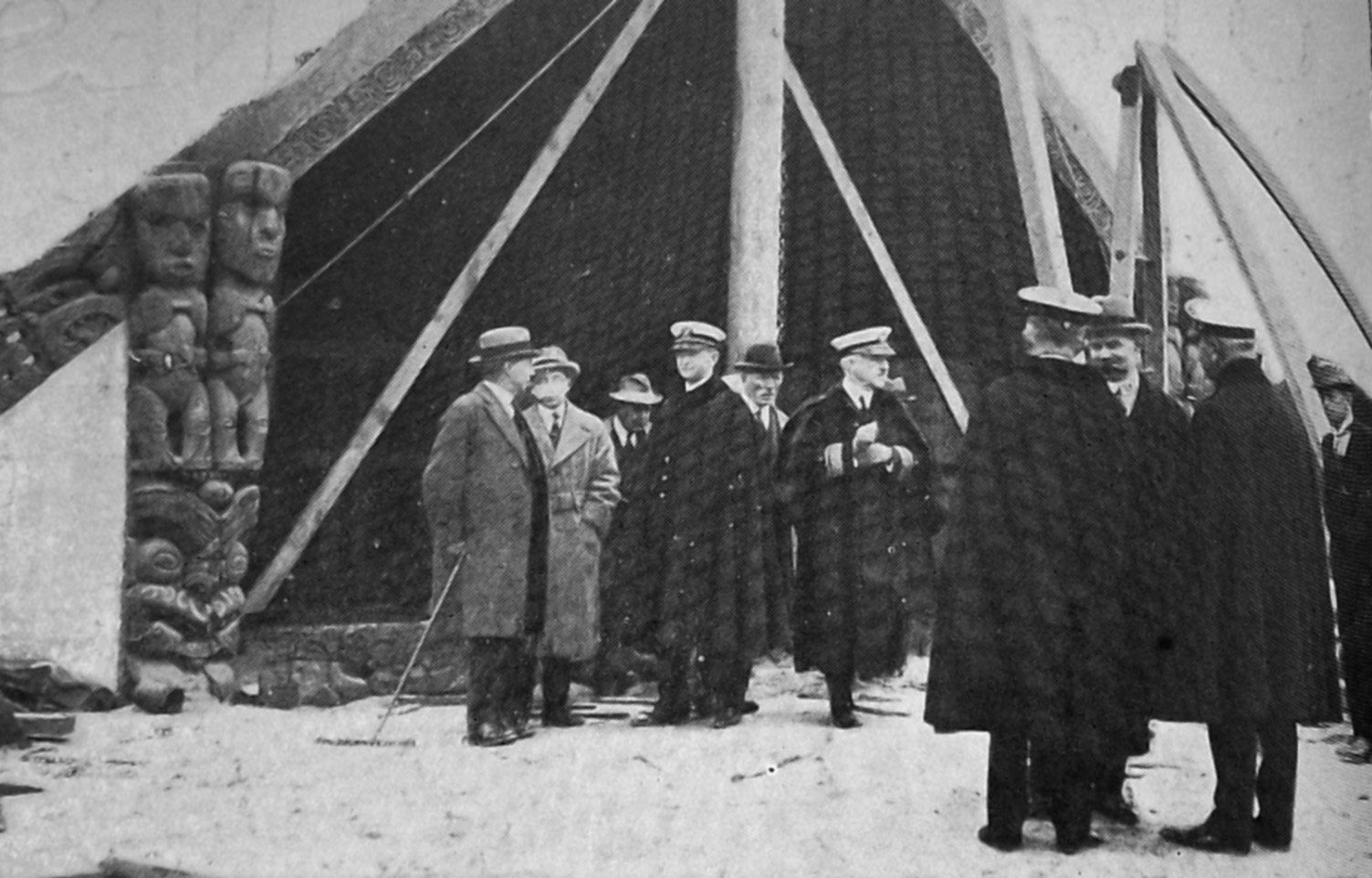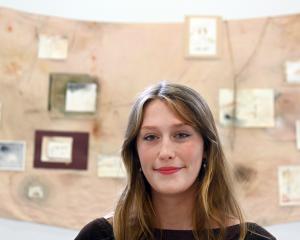
One hundred years ago the Mataatua Whare returned to New Zealand.
The traditional carved meeting house was sent to Dunedin for the 1925 Great Exhibition from London where it had languished for 40 years in the basement of what became the Albert and Victoria Museum.
It had originally been built in Whakatāne by several North Island Māori tribes as a symbol of unity and was richly decorated with woven wall panels and carvings of ancestors and named Mataatua Wharenui (The House of Mataatua) after the name of their ancestral waka.
However, five years after its opening the government dismantled it and sent it to Sydney via steamship for the 1879 International Exhibition. It then travelled to Melbourne for its exhibition before being sent to London and put on display for a few years. It was re-erected in 1924-25 for the Wembley Exhibition and then put back into storage.
After the Great Exhibition in Dunedin it was given to Otago Museum, on permanent loan from the government, which re-erected it, in truncated form. It stayed there for 70 years until it was returned to the descendants of the original tribes in 1996 and later restored.

Dame Gillian found it fascinating so the pair visited Ngāti Awa to consult with it about using the story in a piece for the Dunedin Symphony Orchestra to celebrate Matariki.
Petersen researched the music of the time and found marches played at the various exhibitions, which Dame Gillian has incorporated into her score.

"We’ve told the story in chronological order because it's an important story as part of our country's history, and it's a story that a lot of people just know a part of."
They start with the building of the whare and the "incredible journeys" it made follow on.
"It was supposed to be away for six months and yet it didn’t come back until 70-odd years later."
To tell the story, Dame Gillian has included three vocalists, those roles to be performed in the premiere by Tomairangi Henare, Paul Whelan and Rebecca Ryan.
"One is a baritone, who represents Māori. One is a bass, who represents Pākehā. And there's a soprano, who is the voice and the presence of the house. So she sings from the perspective of the house, as it goes through its various manifestations, situations.
"The bass also plays a couple of specific roles, as the government representative, who wants to take the house to Sydney. And the judge of the Waitangi Tribunal."
The baritone role performed by Henare (Ngāti Kahungunu), as the voice of Māori, is often a lament for what is happening, as Ngāti Awa wanted the whare back but did not have the resources to do that.
For Henare, who will be singing in Dunedin for the first time, the piece resonates — especially as he had not heard the story before and found it fascinating and "mind-boggling".
"As a tangata whenua myself, I think it's important to protect our culture and to preserve it and present it as Māori people intend it to be presented, and show that respect that is needed, for it to still resonate with people, for the tipuna to resonate with us."
To prepare for the piece, Henare, who is Hamilton-based, has been doing a lot of "note bashing" but also a lot of speaking and rhythm.
"That's a big thing for me, because singers already are pretty notoriously bad at rhythm. So I think that extra work and that extra attention to detail is really important for me."
Performing a work for the first time, it is important to respect it, he says. It is always exciting to perform a new composition that has not been marred by tradition or touched by other performers. Normally he would listen to other recordings of a performance as part of his preparation.
"Hopefully, I can make it my own while also paying respect to the composer, to Gillian. So, maybe somewhere down the line, if anyone else is performing this, then I'll be a reference, which is something that's actually really nerve-racking to think about."
It is another step in his career, which began in the small North Island town of Nuhaka where he found his love of performing through kapa haka and church choirs.

"I just fell in love with opera. It was an amazing community. I found a lot of my closest friends there, found my partner there and we've been together since."
Henare, who plays guitar and video games in his spare time, loves the larger-than-life aspects of an opera production and the challenges of embodying a character through singing, acting and moving.
He went on to study singing and composition at Victoria University and is now studying for his masters in advanced opera in Hamilton.
While Henare loves the drama of opera, for Dame Gillian her new work is her first dramatic piece with orchestra and multiple soloists.
Coincidentally, however, Wellington Opera is next month also premiering her chamber opera, Mate Ururoa, which tells the story of Māori Gallipoli soldier Captain Roger Dansey, one of first contingent of Māori allowed to go overseas to fight. He was sent home for disobeying orders. He went on to recruit the pioneer battalion, which was to become the Māori Battalion in World War 2. It is to be performed in Māori and English.
Originally planned to premiere in 2021 at New York’s Carnegie Hall, it was cancelled due to the pandemic.
It also turns out that when the Mataatua Whare was rediscovered in London, Dansey was one of the people sent to attest to its quality before it was sent home.
"It’s funny how the two things are happening at a similar time," Dame Gillian says. "He's not in the other piece but there is a picture of him. He's in a photo, which I thought was quite interesting. "
Alongside the performance a multi-media presentation will screen showing the whare over its history, which will first be presented to Ngāti Awa in Whakatāne before the premiere.
To see:
Brahms & Mataatua: A Journey in Music, Dunedin Symphony Orchestra, June 28, 7.30pm Dunedin Town Hall.












